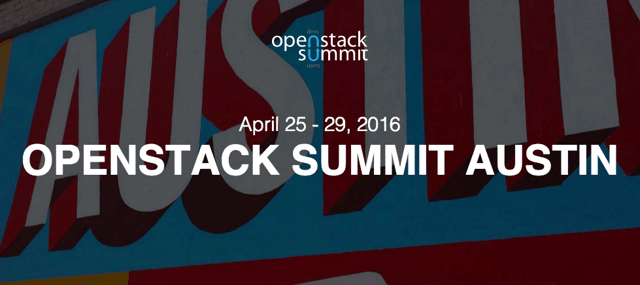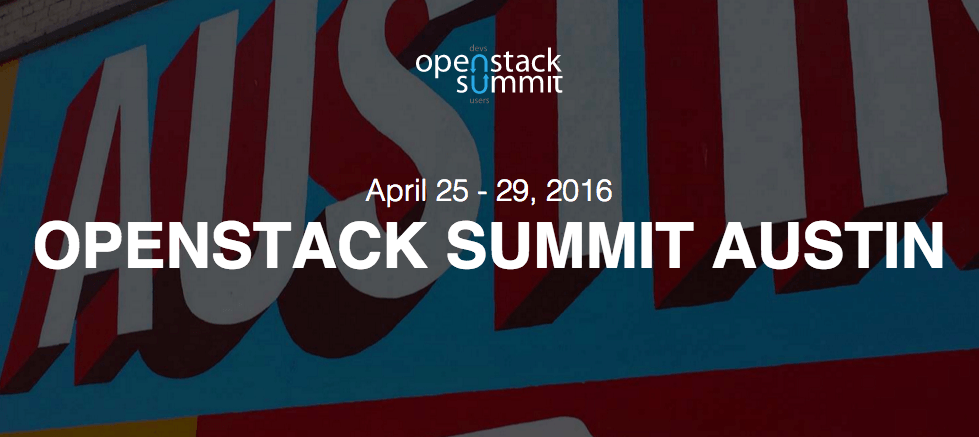We are one weekend away from OpenStack Summit! As I pack my bags, I was thinking back to the previous summits I attended in Tokyo, Vancouver, and Paris. The community, the projects and the stability thereof, have evolved beyond everyone’s expectations and to the naysayers’ disbelief.

I was reading the Apr 2016 OpenStack User Survey Report and these caught my attention:
#1 reason organizations chose OpenStack was to reduce costs: On one hand, IT budgets have been shrinking over the past decade, resulting in IT teams trying to maximize IT allocations. On the other hand, open source technologies and commodity hardware have become very efficient. Enterprises can drive down costs by embracing an open-source mindset combined with a software-based approach.
48% say Software Load Balancing is the most actively used Neutron feature: According to the report, this is the #1 Neutron feature that enterprises actively use, are interested in, or plan to use. Building upon the previous highlight, enterprises are leaning towards software-based solutions that can run on any x86 servers. Software-based solutions have multipronged benefits: agility, flexibility, reduced TCO and faster time to value.
52% say SDN and NFV are the second-most interesting technologies: Networking, especially SDN and NFV, is the second largest technology (next to Containers) for 52% of the OpenStack respondents.
What I expect to learn
As I built out my schedule, it became more apparent that enterprises are looking at solutions that can work in a multicloud environment and handle large deployments (and hence, scaling). Enterprises have workloads deployed on bare metal servers and in virtualized environments on-premises, as well as workloads in the public cloud including AWS, Azure, and GCP. Some of the other session themes seem to be containers on OpenStack, container networking, end-to-end visibility, and troubleshooting.
Organizations adopt OpenStack to derive the benefits of programmability and flexibility of cloud orchestration and automation. However, enterprises implementing OpenStack often find that networking, scalability, and load balancing functions, for instance, can be challenging.
New software-defined principles are simplifying load balancing capabilities for OpenStack private clouds.
What I look forward to
Avi Networks is proud to return to OpenStack Summit! Join us at our booth (C24). We have planned a busy week for the attendees and us at OpenStack!
Here are a few activities I would highly recommend:
Sessions where you can learn more about Avi:
Monitoring OpenStack at Lithium and DataDog (Tuesday, Apr 26, 12.05pm, MR A/B)
Leveraging OpenStack IaaS to run Mesos/Marathon at Time Warner Cable (Tuesday, Apr 26, 2 pm, Ballroom G)
vBrownBag: Lessons Learned from OpenStack Deployments – From Legacy Architectures to Automated, Multi-tenant Private Cloud (Wednesday, Apr 27, 2 pm, Room 11B, 4th Floor)
Sessions that I plan to attend:
These are some sessions I found interesting. If you are a network automation engineer or networking admin, I think you should have these in your schedule as well:
Overstock.com's OpenStack Networking Strategy: Eliminating Network Failover Time (Monday, Apr 25, 11.15am, Ballroom G)
OpenStack HA, or not HA: That is the Question! (Tuesday, Apr 26, 5.30pm, Ballroom G)
Embracing OpenStack - The Verizon User Story Journey (Thursday, Apr 28, 3.10pm Ballroom G)
Avi Networks in the Exhibit Hall:
C24
Booth Crawl, Monday, Apr 23, 6 pm - 7.30 pm
Go Social for Avi Gear:
Want to get cool swag from Avi while you’re are at the Summit? Here’s how:
Follow us on Twitter (@avinetworks)
Follow us on LinkedIn
Tweet us your selfie from our booth and get the coolest #OpenStache shirt
Watch our 30-sec demo of LBaaS with integrated app monitoring!



